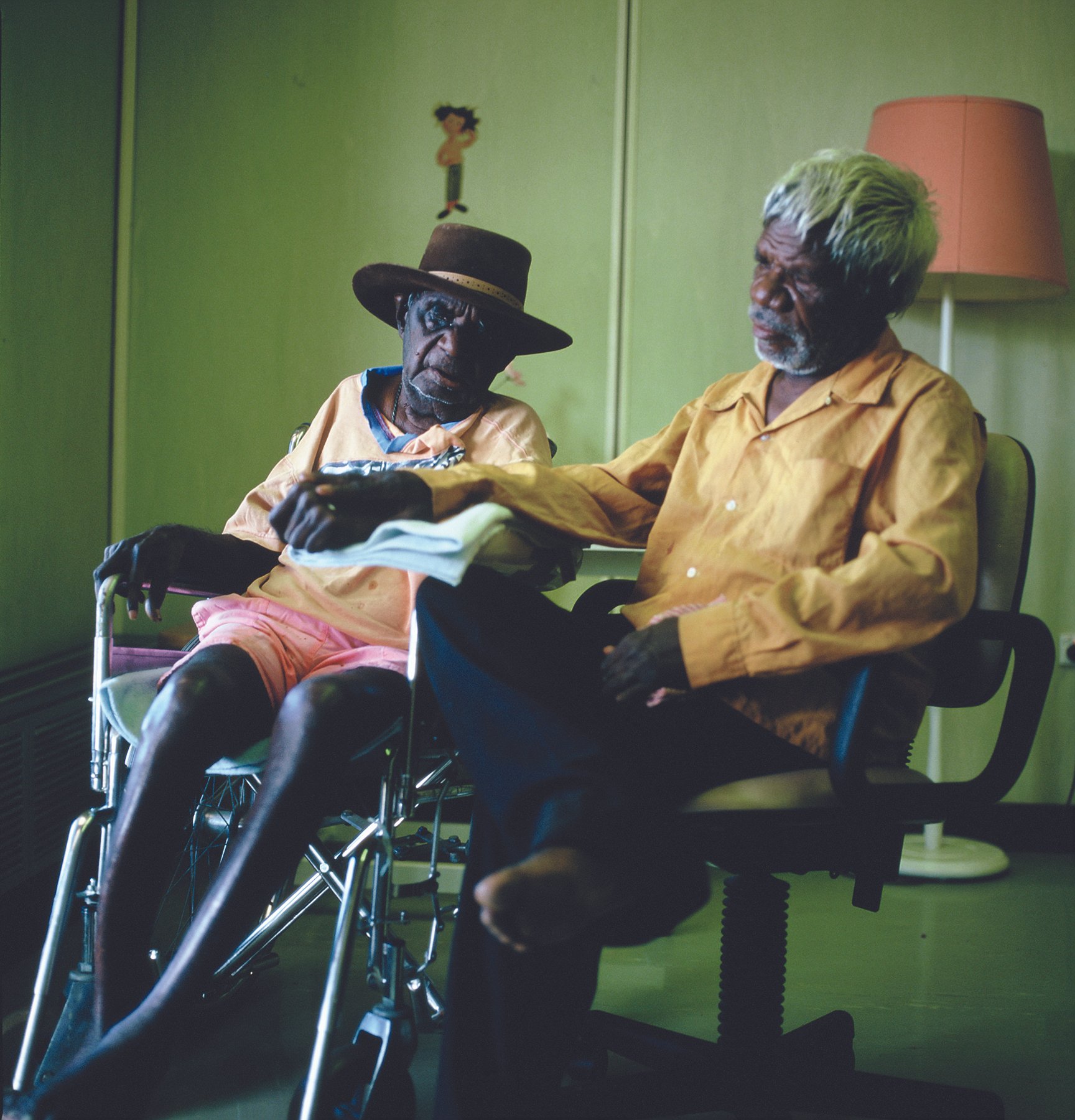PADDY JAMINJI
MARKET ANALYSIS

Paddy Jaminji painted for a brief period between the late 1970’s and 1987 by which time he was almost completely blind. The first art centres in the region were not established until 1986 by the Kimberley Law and, by this time, Jaminji was barely able to paint. For the first half of his brief decade of creative activity paintings were made exclusively for ceremonies and not for sale. Thereafter occasional visitors to the community would offer to purchase paintings and, through Don McLeod and others Jaminji’s works found their way down to the Government marketing company outlet in Perth, run until 1983 by Mary Macha.
Three initial collections of ceremonial boards by Paddy, Rover and others, were sold to the Berndt Museum at the University of Western Australia, and to the Western Australian Museum. A number of boards were sold to individual collectors and contractors working on the Argyle Diamond Mine site or passing through Turkey Creek, however the majority of these had little if any fixative added to the pigments and were stored between ceremonies on earth floors and in poor conditions. Those used in ceremonies and subject to poor handling have mostly suffered varying degrees of damage including smudging of the ochred surfaces and deterioration of the board on which they were painted. The resultant loss in value is reflected in a number of the artist’s more disappointing auction results.
Only 61 works by Paddy Jaminji have been offered for sale through auction compared to 350 works by Rover Thomas. Yet despite his lack wide recognition and his relatively small oeuvre he has a better than average success rate of 70% with 43 works sold in total. With just one exception, all of those that failed to sell were lesser works either because of size, damage, or because of having somewhat simplistic images with little colour relief.
His auction results do not reflect a great deal of difference between works painted early or late in his career, for sale or ceremony. Generally the larger the work and the more engaging the image the higher the price it has received. The average price paid to date for works more or less 180 x 90 cm. in size is $56,188 while works around the 120 x 90 cm. range have averaged $18,817 and smaller 90 x 60 cm. paintings have achieved a mean of $15,422.
As expected for an artist who was already an old man when he began painting, large and complex works are limited in number, and attract the highest prices on the rare occasions they appear for sale. His highest price was for a large work on canvas measuring 91.5 x 183 entitled A Big Hill Gumeri on Bedford Downs Station 1984 which sold for $129,750 in Sotheby’s July 2005 auction (Lot 134), while a very early 122 x 122 cm. board sold at Lawson-Menzies in June 2005 for his second highest result of $105,000 (Lot 54).
Works by Paddy Jaminji that remain in private hands are rare and given his seminal place in the emergence of the Kimberley art movement should increase in value considerably, over time. The discovery of spectacular paintings by this artist are likely to be few indeed, and when these come up for sale they should be expected to better his existing sales records substantially.
© Adrian Newstead

